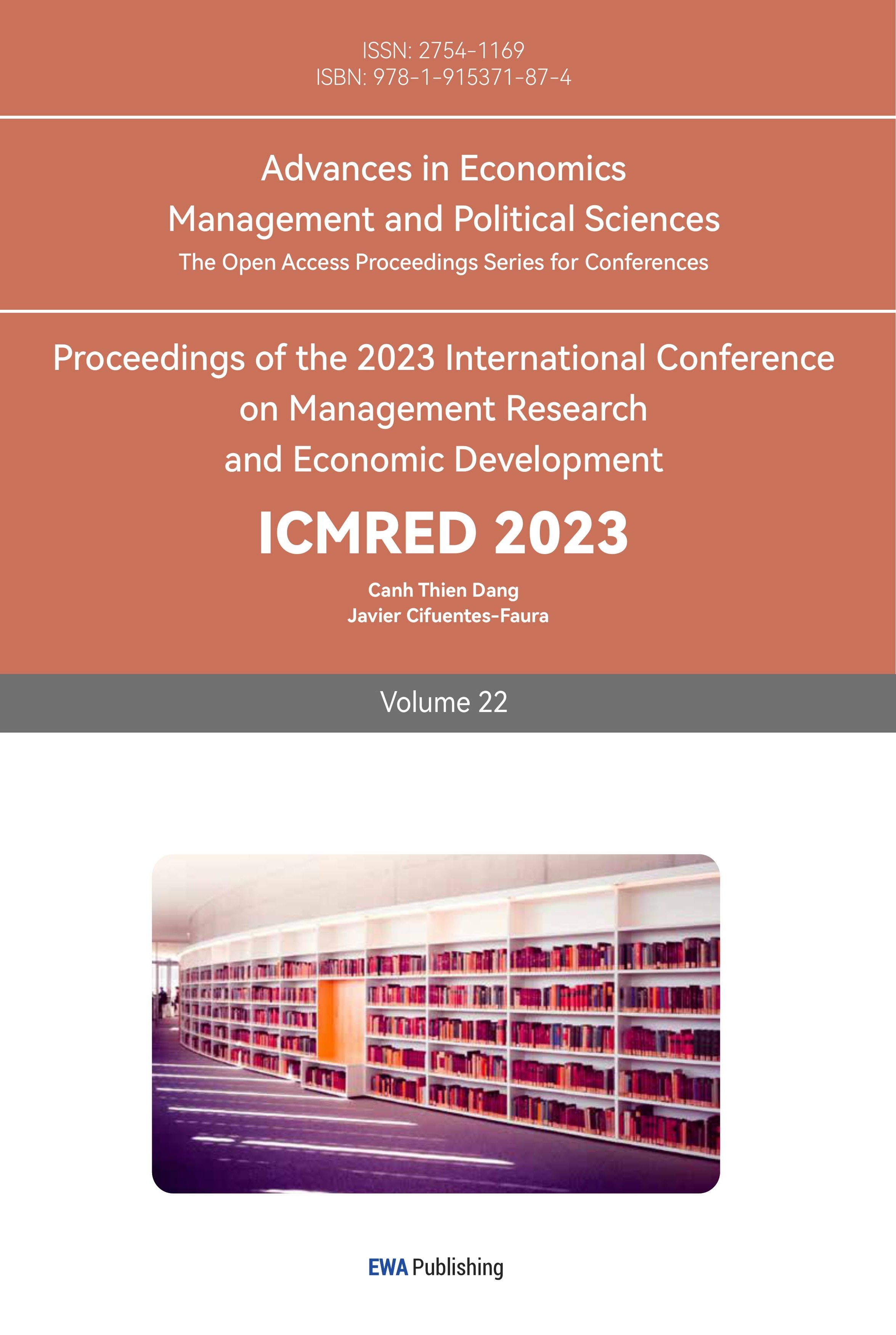References
[1]. Persson, T., &Fabellini, G. (2002). Political economics: explaining economic policy. MIT Press.
[2]. Drazen, A. (2000). Political economy in macroeconomics. Princeton University Press.
[3]. Campbell, P. (2019). Military autonomy: its origins, limits, and the politico-military dialectic of war. Defence Studies, 19(3), 277-296.
[4]. Tuna, F. (2022). A Political Assessment of The Effect of Russian-Ukrainian War on The Energy Markets. Journal of Financial Economics and Banking, 3(2), 73-76.
[5]. Chen, Y., Jiang, J., Wang, L., & Wang, R. (2023). Impact assessment of energy sanctions in geo-conflict: Russian-Ukrainian war. Energy Reports, 9, 3082-3095.
[6]. YuZhang.(2022).Yu Zhang: Rethinking the Russia-Ukraine Conflict from the Perspective of the Evolution of the Global Crude Oil Landscape. https://m.cn.investing.com/analysis/article-200475275?ampMode=1.
[7]. Mohammed, K. S., Usman, M., Ahmad, P., & Bulgamaa, U. (2022). Do all renewable energy stocks react to the war in Ukraine? Russo-Ukrainian conflict perspective. Environmental Science and Pollution Research, 1-12.
[8]. Mars Data Research Institute. (2022) Dreams shattered in Russia: $50 billion foreign capital flight in March, and more than 200 billion too late to transfer. https://zhuanlan.zhihu.com/p/500313689.
[9]. Trusin, C., Bertholdo, L., & Santanna, J. J, (2022). The Effect of the Russian-Ukrainian Conflict from the Perspective of Internet Exchanges. In: 2022 18th International Conference on Network and Service Management.Thessaloniki.pp.261-267.
[10]. Jin, S, (2022). Russian-Ukrainian War Affects Ruble and Dollar. In: 2022 International Conference on Economics, Smart Finance and Contemporary Trade (ESFCT 2022).Xi’an. pp.383-389.
[11]. Izzeldin, M., Muradoglu, G., Pappas, V., Petropoulou, A., & Sivaprasad, S. (2023). The impact of the Russian-Ukrainian war on global financial markets. International Review of Financial Analysis, 102598.
Cite this article
Zeng,H. (2023). The Economic Consequences of Political Factors: Energy, Finance, and Policies. Advances in Economics, Management and Political Sciences,22,388-396.
Data availability
The datasets used and/or analyzed during the current study will be available from the authors upon reasonable request.
Disclaimer/Publisher's Note
The statements, opinions and data contained in all publications are solely those of the individual author(s) and contributor(s) and not of EWA Publishing and/or the editor(s). EWA Publishing and/or the editor(s) disclaim responsibility for any injury to people or property resulting from any ideas, methods, instructions or products referred to in the content.
About volume
Volume title: Proceedings of the 2023 International Conference on Management Research and Economic Development
© 2024 by the author(s). Licensee EWA Publishing, Oxford, UK. This article is an open access article distributed under the terms and
conditions of the Creative Commons Attribution (CC BY) license. Authors who
publish this series agree to the following terms:
1. Authors retain copyright and grant the series right of first publication with the work simultaneously licensed under a Creative Commons
Attribution License that allows others to share the work with an acknowledgment of the work's authorship and initial publication in this
series.
2. Authors are able to enter into separate, additional contractual arrangements for the non-exclusive distribution of the series's published
version of the work (e.g., post it to an institutional repository or publish it in a book), with an acknowledgment of its initial
publication in this series.
3. Authors are permitted and encouraged to post their work online (e.g., in institutional repositories or on their website) prior to and
during the submission process, as it can lead to productive exchanges, as well as earlier and greater citation of published work (See
Open access policy for details).
References
[1]. Persson, T., &Fabellini, G. (2002). Political economics: explaining economic policy. MIT Press.
[2]. Drazen, A. (2000). Political economy in macroeconomics. Princeton University Press.
[3]. Campbell, P. (2019). Military autonomy: its origins, limits, and the politico-military dialectic of war. Defence Studies, 19(3), 277-296.
[4]. Tuna, F. (2022). A Political Assessment of The Effect of Russian-Ukrainian War on The Energy Markets. Journal of Financial Economics and Banking, 3(2), 73-76.
[5]. Chen, Y., Jiang, J., Wang, L., & Wang, R. (2023). Impact assessment of energy sanctions in geo-conflict: Russian-Ukrainian war. Energy Reports, 9, 3082-3095.
[6]. YuZhang.(2022).Yu Zhang: Rethinking the Russia-Ukraine Conflict from the Perspective of the Evolution of the Global Crude Oil Landscape. https://m.cn.investing.com/analysis/article-200475275?ampMode=1.
[7]. Mohammed, K. S., Usman, M., Ahmad, P., & Bulgamaa, U. (2022). Do all renewable energy stocks react to the war in Ukraine? Russo-Ukrainian conflict perspective. Environmental Science and Pollution Research, 1-12.
[8]. Mars Data Research Institute. (2022) Dreams shattered in Russia: $50 billion foreign capital flight in March, and more than 200 billion too late to transfer. https://zhuanlan.zhihu.com/p/500313689.
[9]. Trusin, C., Bertholdo, L., & Santanna, J. J, (2022). The Effect of the Russian-Ukrainian Conflict from the Perspective of Internet Exchanges. In: 2022 18th International Conference on Network and Service Management.Thessaloniki.pp.261-267.
[10]. Jin, S, (2022). Russian-Ukrainian War Affects Ruble and Dollar. In: 2022 International Conference on Economics, Smart Finance and Contemporary Trade (ESFCT 2022).Xi’an. pp.383-389.
[11]. Izzeldin, M., Muradoglu, G., Pappas, V., Petropoulou, A., & Sivaprasad, S. (2023). The impact of the Russian-Ukrainian war on global financial markets. International Review of Financial Analysis, 102598.









